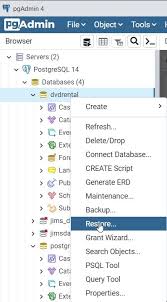How to Create a Database in pgAdmin
Creating a database in pgAdmin is a simple task that can be done in a few easy steps. Whether you are a beginner or an experienced user, this guide will walk you through the process of setting up a new database using pgAdmin.
Step 1: Open pgAdmin
The first step to creating a database in pgAdmin is to open the application. If you haven’t already installed pgAdmin, you can download it from the official website and install it on your computer.
Step 2: Login to the Server
Once pgAdmin is open, you will need to login to the server where you want to create the database. Enter the server details, including the hostname, port, username, and password, and click “Login” to connect.
Step 3: Create a New Database
After logging in to the server, you can create a new database by right-clicking on the “Databases” node in the left-hand panel and selecting “Create” > “Database”. Enter a name for the new database and configure any additional settings as needed.
Step 4: Configure Database Properties
Once you have created the new database, you can configure its properties by right-clicking on the database name in the left-hand panel and selecting “Properties”. Here, you can set options such as the owner, encoding, tablespace, and other settings.
Step 5: Create Tables and Data
With the database created and configured, you can now start creating tables and adding data to your database. Use the SQL editor in pgAdmin to write and execute queries to create tables, insert data, and perform other operations.
Step 6: Manage Your Database
Once your database is up and running, you can use pgAdmin to manage and monitor its performance. You can view and modify table structures, run queries, analyze query performance, and more to ensure your database is running smoothly.
Conclusion
Creating a database in pgAdmin is a straightforward process that anyone can do with a little bit of guidance. By following the steps outlined in this guide, you’ll be able to set up a new database and start managing your data in no time. So why wait? Get started today!
